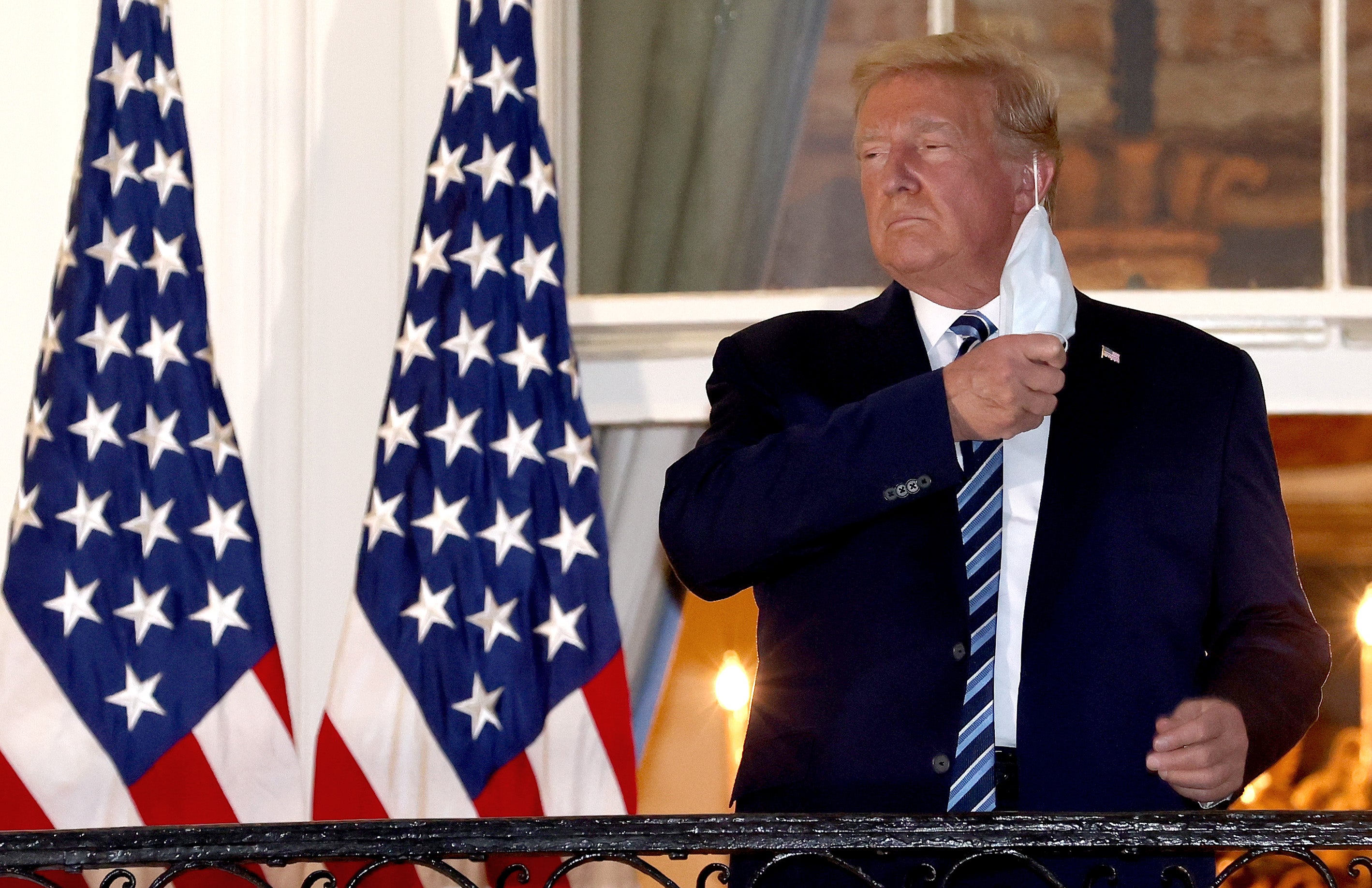How Donald Trump’s fight with Covid unfolded two years before Biden diagnosis
Low blood oxygen levels and lung issues led officials to believe Trump might have to be put on ventilator in 2020
News of President Joe Biden’s Covid diagnosis comes nearly two years after his predecessor Donald Trump contracted the virus.
Mr Trump announced that he and Melania Trump had tested positive for coronavirus on 2 October 2020, about a month before the election.
The then-president was taken to Walter Reed National Military Medical Center later that day, spending three days at the hospital, where he received a number of treatments.
Mr Trump returned to the White House on 5 October.
Trump’s condition was worse than initially revealed
The president was sicker than what was revealed at the time, with his blood oxygen levels so depressed and his lung issues so severe that officials believed that he might have to be put on a ventilator.
Mr Trump had a fever and found it difficult to breathe on 2 October, the day he was taken to Walter Reed.
He fought back against the decision to move him to the hospital, only agreeing when aides told him that he could walk out of the White House under his own steam or wait until the Secret Service had to carry him out of the building as his condition worsened.
His medical team tried to downplay his illness, claiming that the then-74-year-old was improving. At that age and being overweight, he was at high risk for severe illness.
Mr Trump was provided with an aggressive group of treatments at the hospital. At one point during his stay, he rode in a vehicle outside the hospital to wave at his supporters who had gathered outside the complex.

President was given oxygen twice at the White House
The then-president was given oxygen twice at the White House before heading to Walter Reed, according to The New York Times.
Mr Trump, who grew ill before vaccines had become available, received a drug at the White House from the biotechnology firm Regeneron Pharmaceuticals. It was an antibody cocktail that wasn’t widely available to the public at the time.
Following his hospitalization, Mr Trump began using a steroid, dexamethasone, which was recommended for patients with severe cases of the disease. These patients often need to use a ventilator or receive extra oxygen.
Mr Trump was also administered remdesivir, an antiviral drug, for five days.
Mr Trump’s doctor, Sean Conley, tried to paint a rosy picture to the press.

“He’s doing great”, he said.
When Chief of Staff Mark Meadows tried to tell reporters that Mr Trump wasn’t doing as well as it was being portrayed, the president flew into a rage, The Times reported.
Trump appeared to struggle upon return to White House
The president appeared to still be fighting the illness when he came back to the White House on 5 October 2020.
He walked up the steps to the balcony facing the south lawn, immediately took off his facemask and saluted his helicopter as it took off, in a scene that appeared to have been carefully choreographed.
Doctors said at the time that he appeared to be using the muscles in his neck to aid his breathing, a sign that his lungs weren’t getting sufficient oxygen.

Aides scrambled to get Trump unauthorized antibody cocktail
Mr Trump was diagnosed with Covid-19 on 1 October 2020, prompting aides to work feverishly to get him the antibody cocktail from Regeneron, which wasn’t authorized by the FDA at that time.
White House lawyer Patrick Philbin called then-FDA Commissioner Dr Stephen Hahn to talk about getting the drug approved for two senior administration officials, without revealing who they were, The Times reported.
The FDA worked to get the drug cleared via an emergency investigational new drug application, a process usually used for critically ill patients agreeing to use an experimental drug.
A Regeneron spokesperson said that the company sent a number of doses with extras “in case of any administration issues”.
The extra doses weren’t sent back. Dr Conley told colleagues that they were at one point left in a White House medical office fridge, according to the paper.
After the application was approved, the White House said the doses were for the first couple. The first lady declined to use the drug, which takes around an hour to infuse intravenously, The Times noted.
The president grew convinced that the antibody cocktail had saved his life.
“I’m proof it works”, he told aides.
A former administration official told the paper that the saying became a running joke among health officials.
They would ask each other if anyone was going to let Mr Trump know that the drug failed him as it was designed to stop people from being hospitalized.



Join our commenting forum
Join thought-provoking conversations, follow other Independent readers and see their replies
3Comments